Exhibition place:Second Floor, Fashion Gallery, China Silk Museum
Exhibition time:2021.10 - 2022.10

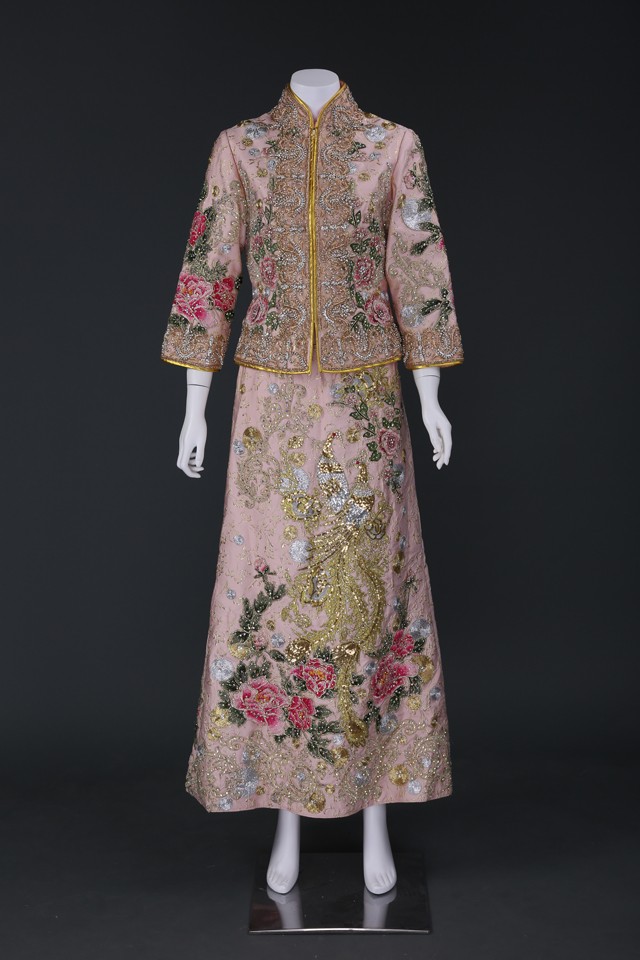
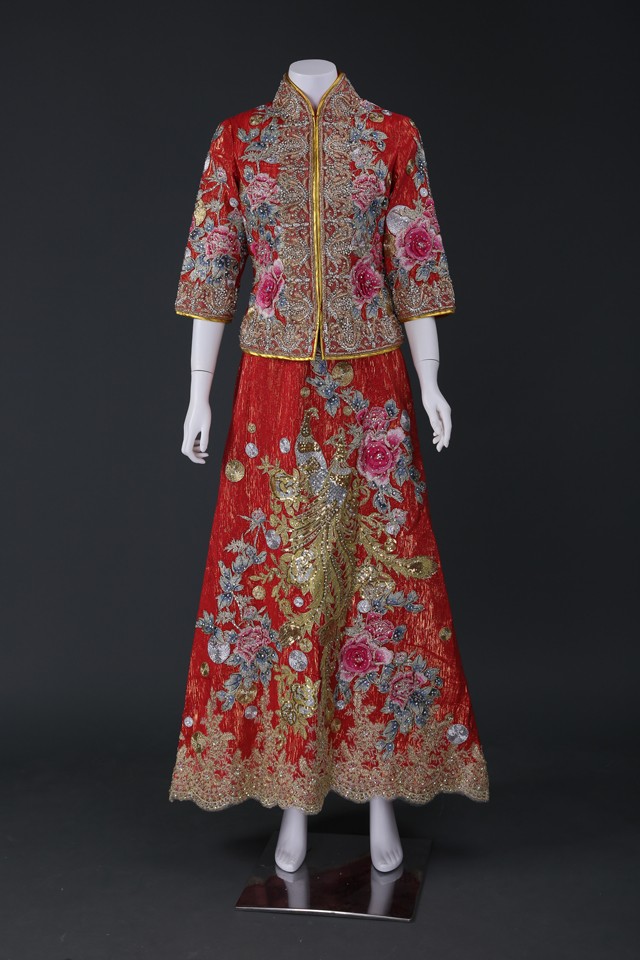
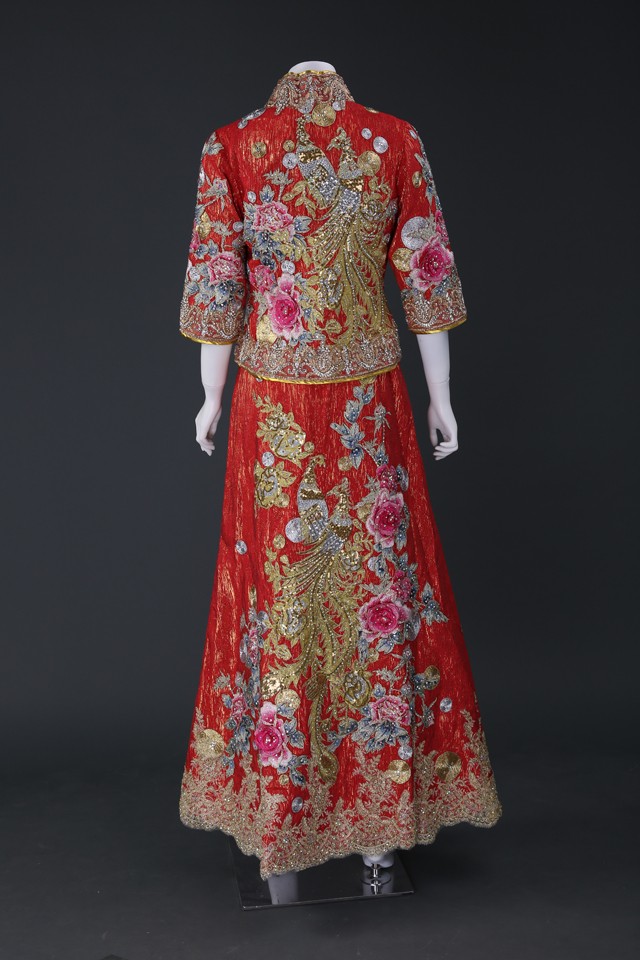
Malay robe, also known as Malay coat, is the traditional costume of Malaysian Chinese descent. The traditional dresses brought by the Chinese when they went to Malaysia was gradually improved to adapt to the local customs. It is a combination of traditional Chinese dress and Western tailoring.The dresses used exquisite workmanship, with bright colors, is a fusion of traditional classics with innovative fashion.
Jimmy Choo


An elegant set for wedding ceremonies, designed in the style of the Chinese national qipao dress.
When developing the design, ancient elements of traditional Uzbek ornament were used. The embroidery ornament used in the dress symbolizes well-being, wealth and family happiness.
The costume consists of a dress and a headdress. Asymmetric qipao with embroidery using the technique of Bukhara gold embroidery. Graceful headpiece in the form fluttering moths give lightness and splendor.
Umida Muminova


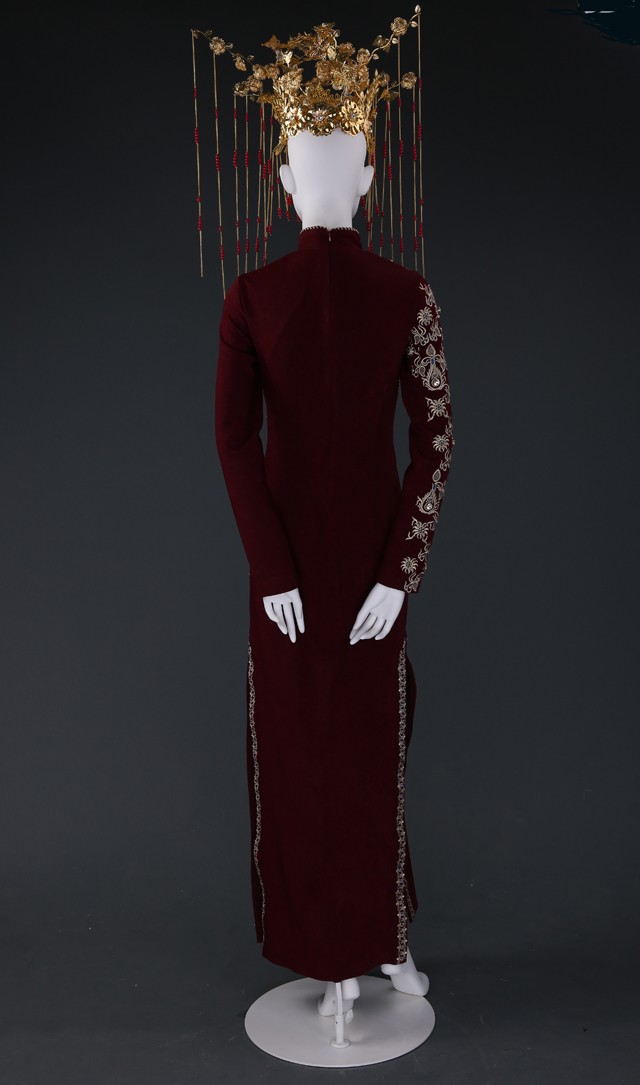
The dress is made of Uzbek national silk fabric Khan-atlas, made using the ikat technique.
This fabric is unique and inimitable, it is always different. The color palette of the Khan-atlas contains the entire spectrum of colors, which gives the fabric a unique uniqueness.
To add elegance, hand embroidery with beads is used sewing qipao.
Umida Muminova
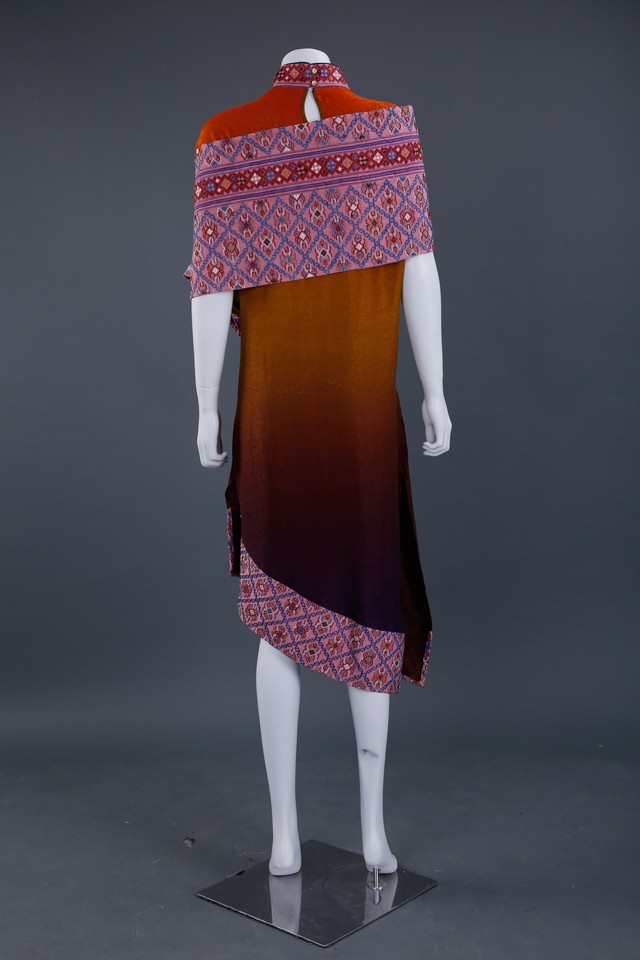
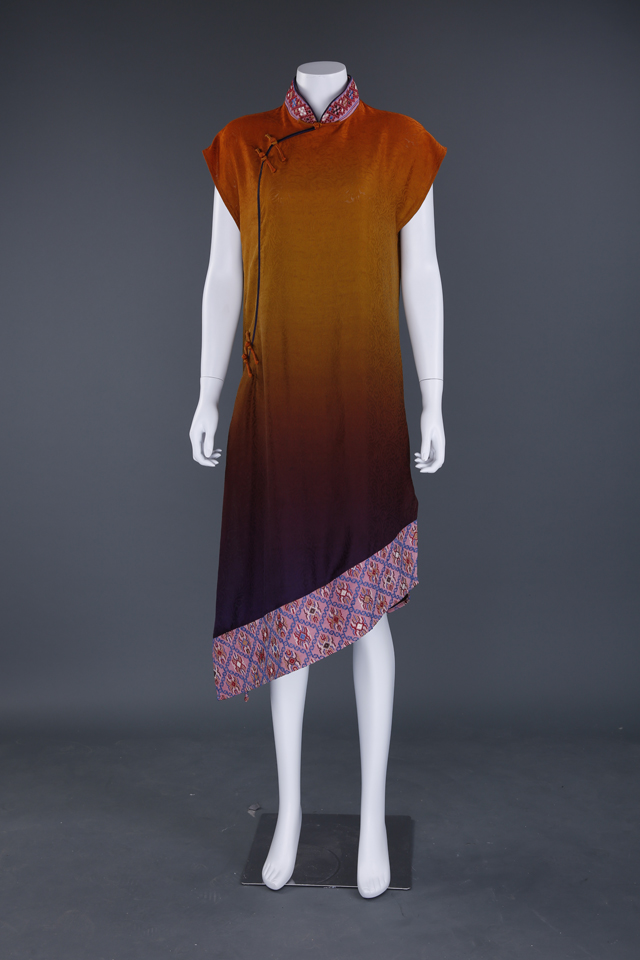


《Dialogue cross the Himalaya: a co-creation by Karma Choden and Di Li》
Using Kira, the traditional hand-woven silk fabric of Bhutan and Gambiered Canton Gaoze, an ancient silk fabric of China, the two artists work together to create a Qi Pao, presenting the textile heritage in both countries.
Karma Choden



Gambiered Canton Gaoze (mud silk or tea silk), is considered one of the most revered of Chinese silk craftsmanship, known for its rich tones of reddish-browns and deep black, no one batch is the same and its patina and strength change and becomes even more exceptional over time. The labor-intensive dyeing process, also dating back to the Ming Dynasty, takes place first in the Pearl River Delta in the South of China. The silk is dyed with the vegetable juice of a yam (Dioscorea Cirrhosa) known both for its high tannin content and antibacterial properties in Chinese Medicine.
Lidi

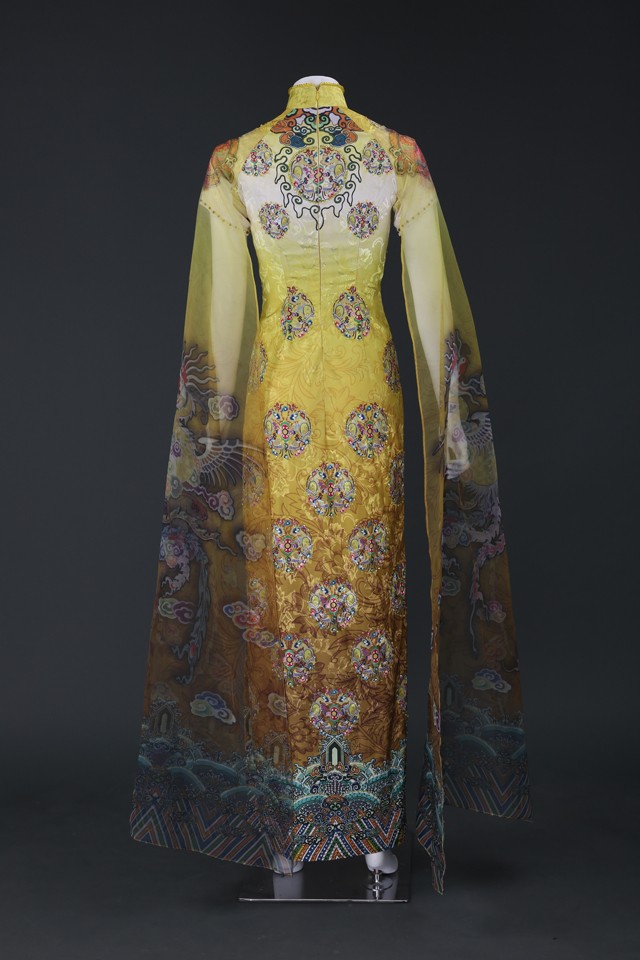
The phoenix image was chosen as the main motif. According to Vietnamese mythology, phoenix has the neck of a snake, the breast of a swallow and the tail of a fish, and symbolises the grace, nobility and pride. Two long sleeves made from organza fabric with cloud and phoenix wing motifs are the imitation of the phoenix wings that makes the qipao more special. The rolling floral motifs are designed over the fabric background to make the phoenix images more graceful and attractive.
Bach Dat Dinh
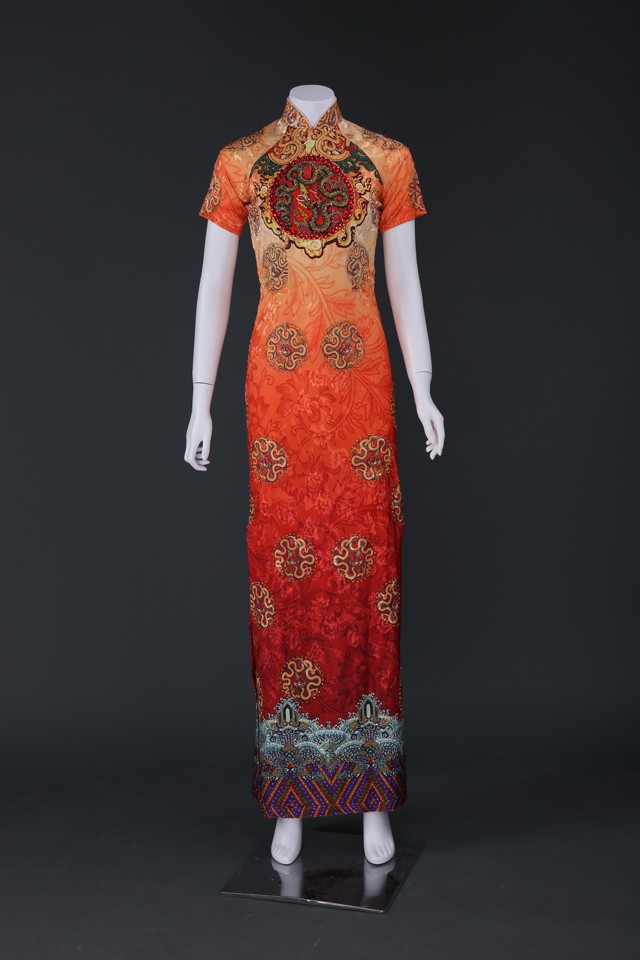

The dragon image of Ly dynasty of Vietnam (1010 – 1225) is the main detail. The rounded bodies of the dragons curve gracefully in a long shape and taper gradually to the tail. The dragons always keep a gem in their mouths as the symbol of humanity, nobility and knowledge. At the bottom of this qipao, the wave patterns are used to describe that the origin of dragons is from deep ocean, according to traditional mythology of Vietnam. Lotus flower is the national flower of Vietnam, so the lotus motifs were design over the fabric of the qipao as the background to specialize the dragon motifs.
Bach Dat Dinh
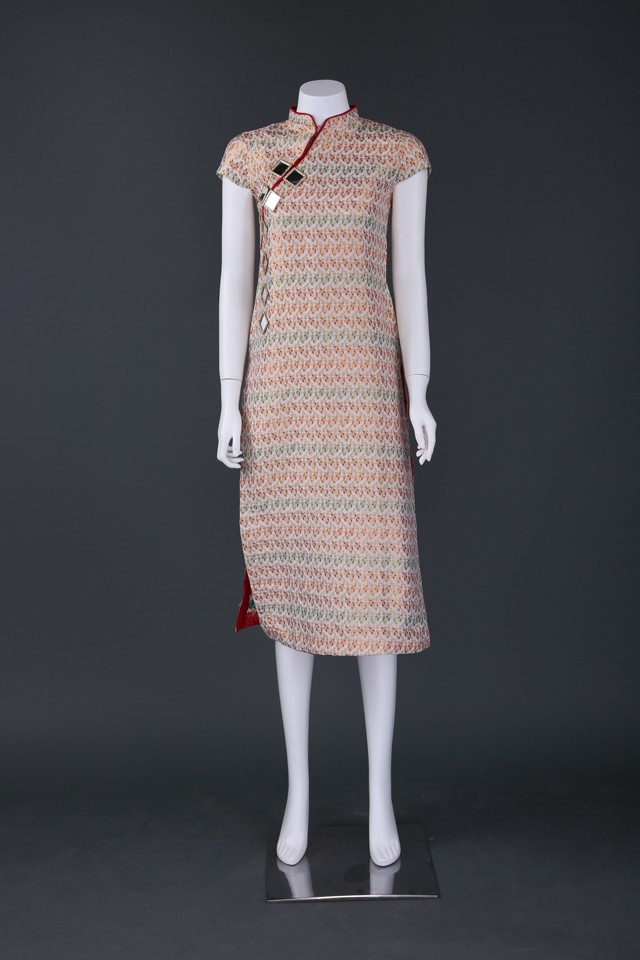

Brocade, zari (or jari) is an even thread traditionally made of fine gold or silver used in traditional garments of India, Pakistan and Bangladesh. This thread is woven into the textile fabrics to make the intricate patterns and elaborate the designs of embroidery called “zardozi”. In this qipao, the mirror pieces are embroidered as the buttons of the qipao.
Asim Mushtaq
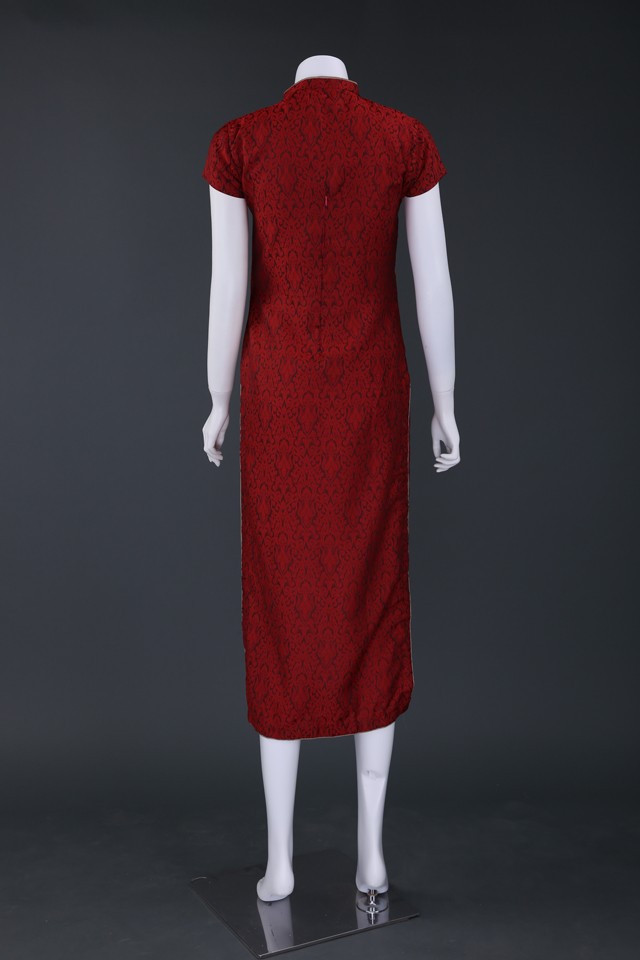
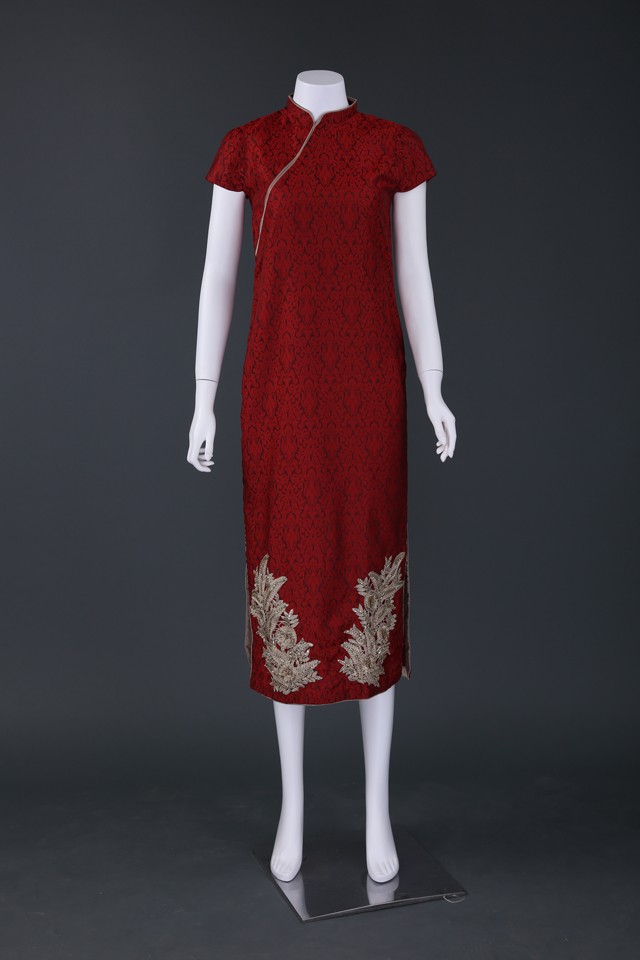
This red qipao is made from silk mixed with polyester fabric. The embroideries of Pakistan are very famous in South Asia. Although the techniques, design elements and uses may be in common, many are peculiar to individual communities and distinguishable by their style, motifs and colour. In this qipao, the lavender flower patterns were embroidered with golden and silver threads at the bottom part. Floral patterns were designed over the fabric background to make the graceful look for the dress.
Waris Ali


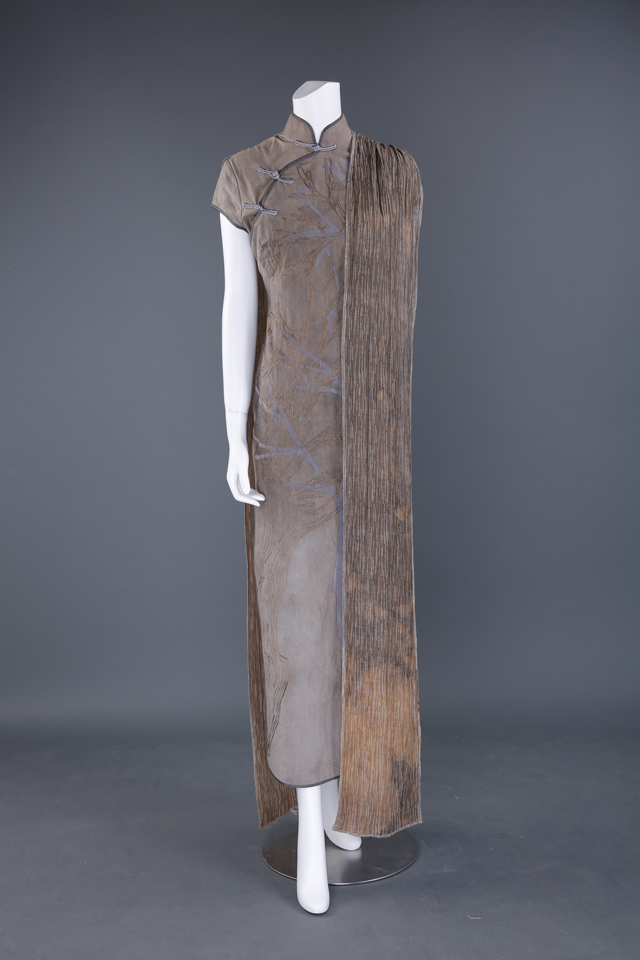
The theme of my cheongsam is to tell the love story between Lu Xiaoman and Xu Zhimo, which is a metaphor for the intertwining branches and tree gestures in nature. The material for the cheongsam is old homespun fabric from Chongming District, Shanghai, made in the era when Lu Xiaoman was famous in Shanghai. Dyeing with tea dye, in the name of tea, Yonghuai this pair of Shanghai Beach never aged literati.
Alicia Gu
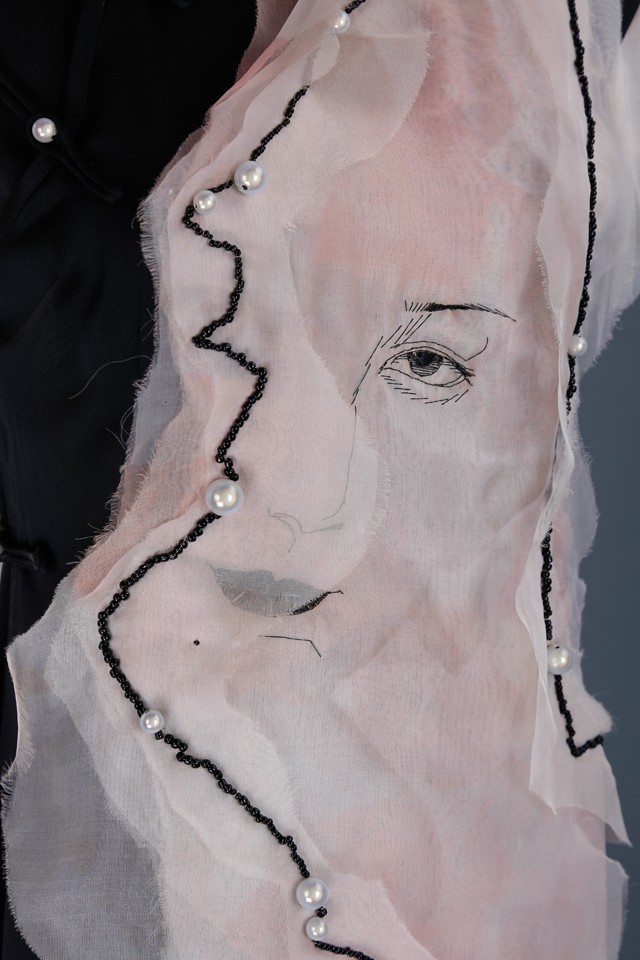
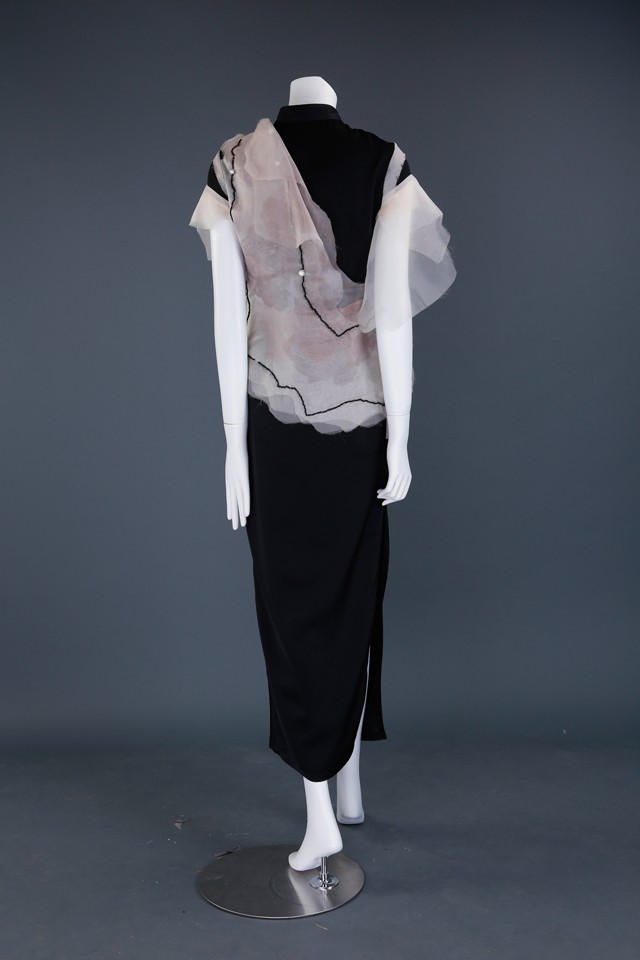
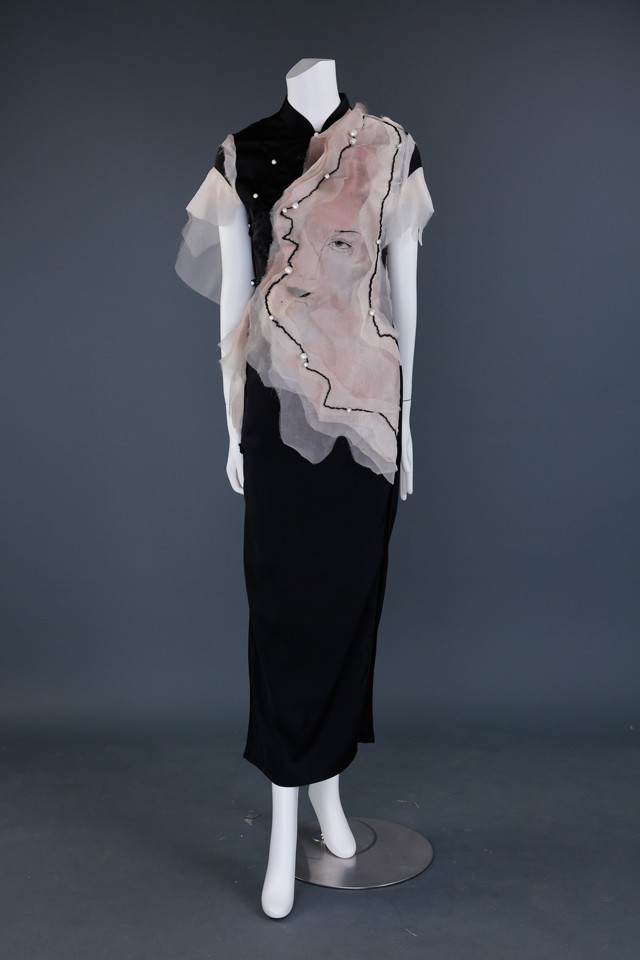
The work comes from Ruan Lingyu, a film actress of a generation. I compared Ruan Lingyu to a rose in a cage, and showed her bleak beauty.
The red, white and black roses are placed upside down and look as if someone deliberately picked them. The scattered petals fall into a six layer print. The layered print contrasts the impact of black, red thick and white void, like roses in the sun's burning with "fragrance." At the same time, another pen sketched Ruan Lingyu's eyebrows, half hidden and half visible organza added fantasy.
Xie Zengqi

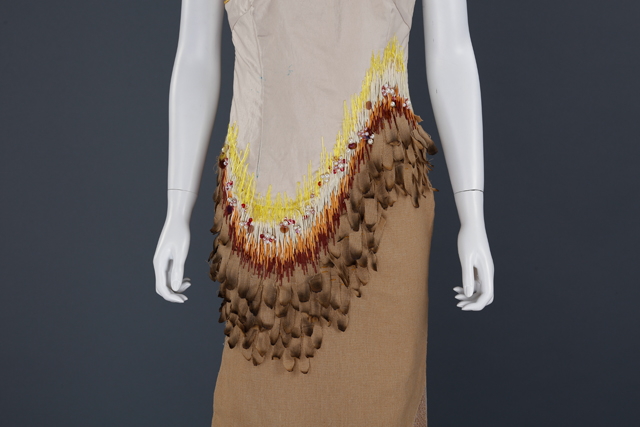

My cheongsam works start with gorgeous fabrics on the top and then slowly turn into burlap at the end. The process resembles as how resources are being used.Also I used incinerated fabrics in my work to express this irreversible damage. A piece of burned fabric resembles what's left after a big forest fire.
Li Liangxuan

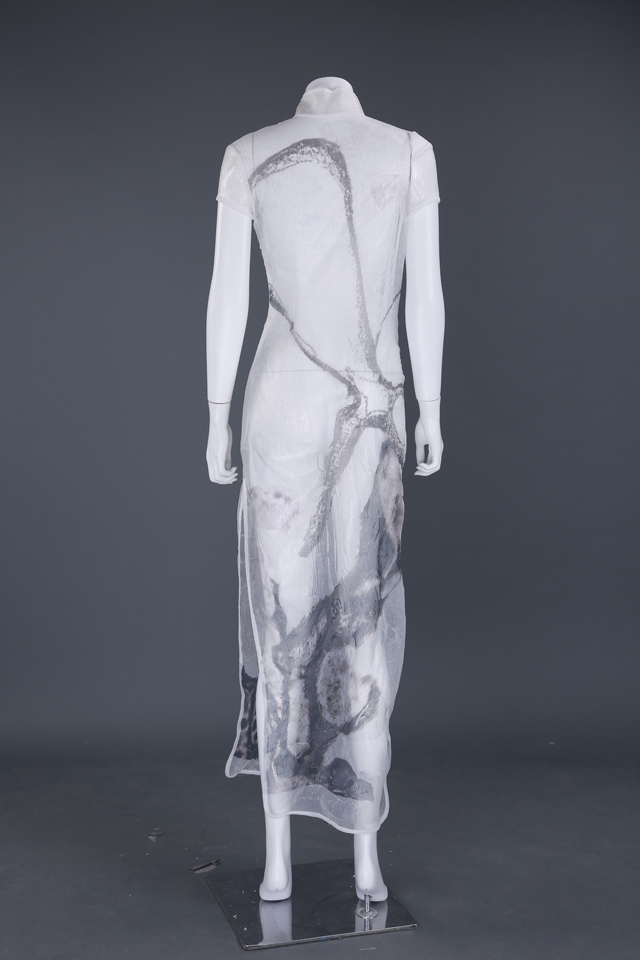
I use embroidery, a very traditional and delicate craft, combined with contemporary materials such as silicone, to simulate the texture and state of tears. In addition, mixed with a photographer's image of tears left by different patterns under a microscope, I created some printing patterns to present tears from a micro perspective.
Song Zixian

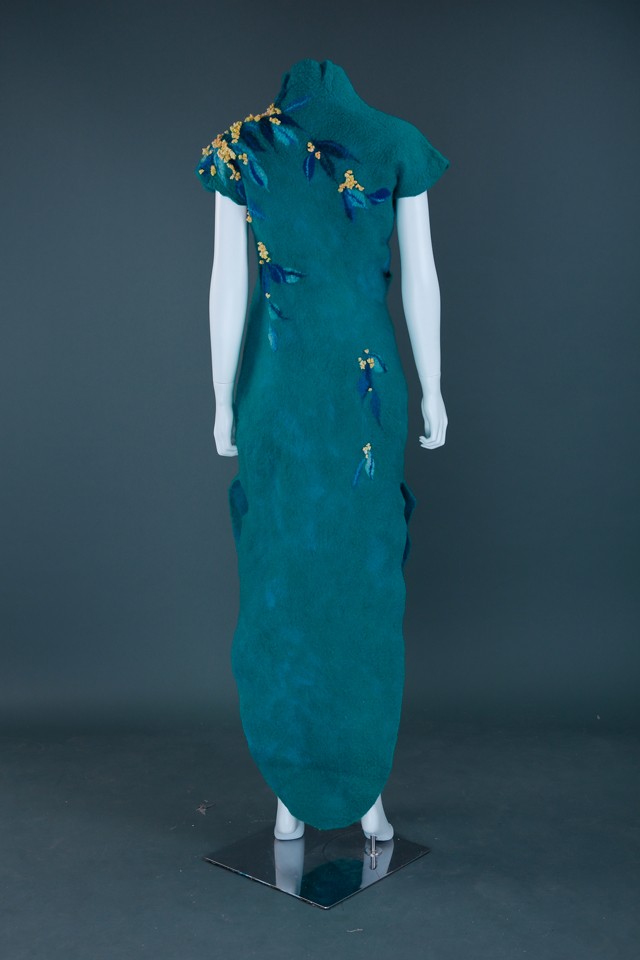

This piece of art takes "nature" as the title, uses osmanthus flowers as the inspiration, applies Merino wool combined with silk fiber as material, and uses intangible heritage felt rolling technology and flower felt technology. It is both a fashionable dress but also a piece of artwork.
Zhang Tingting
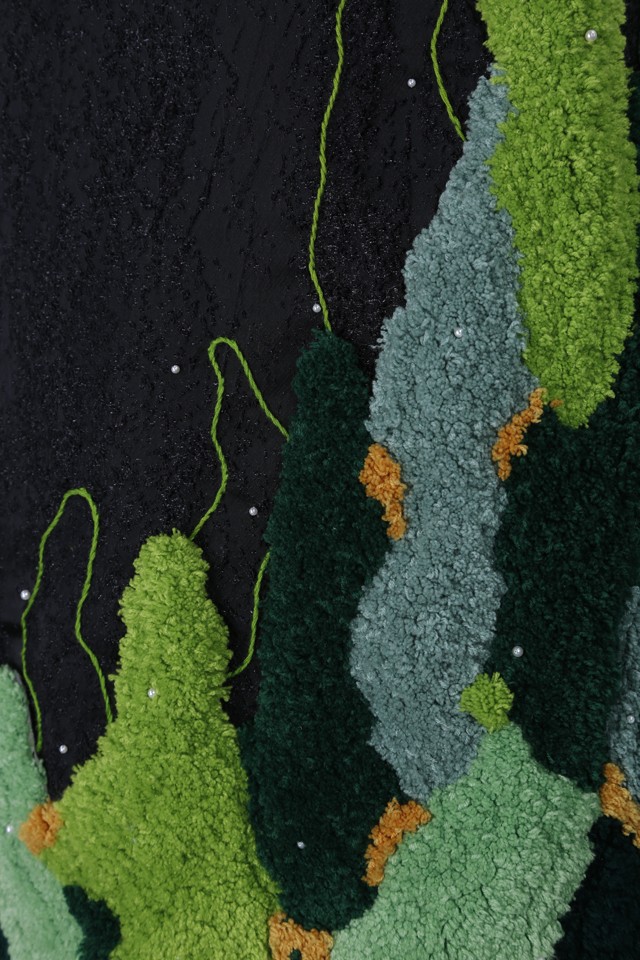
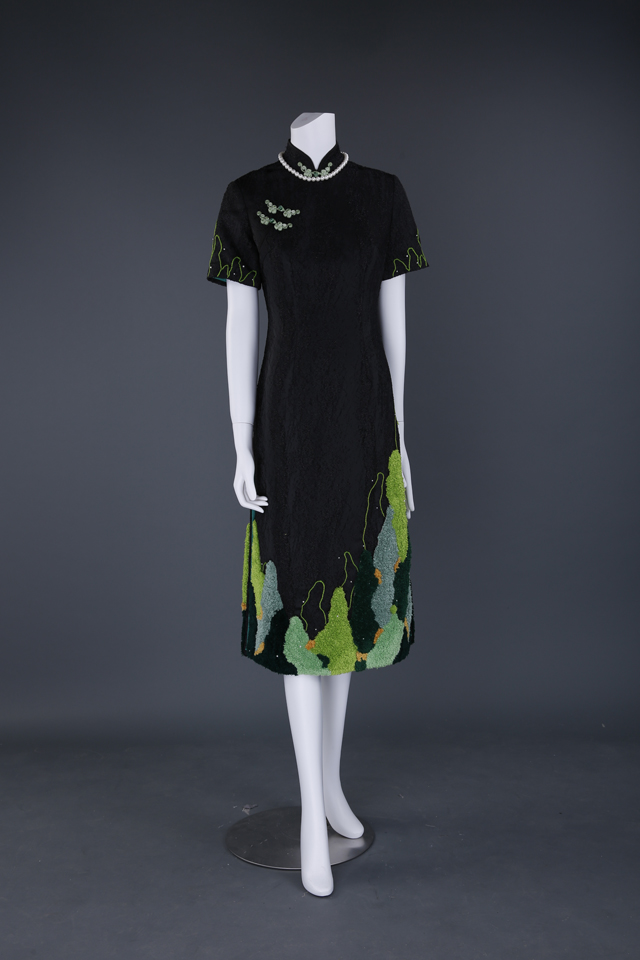
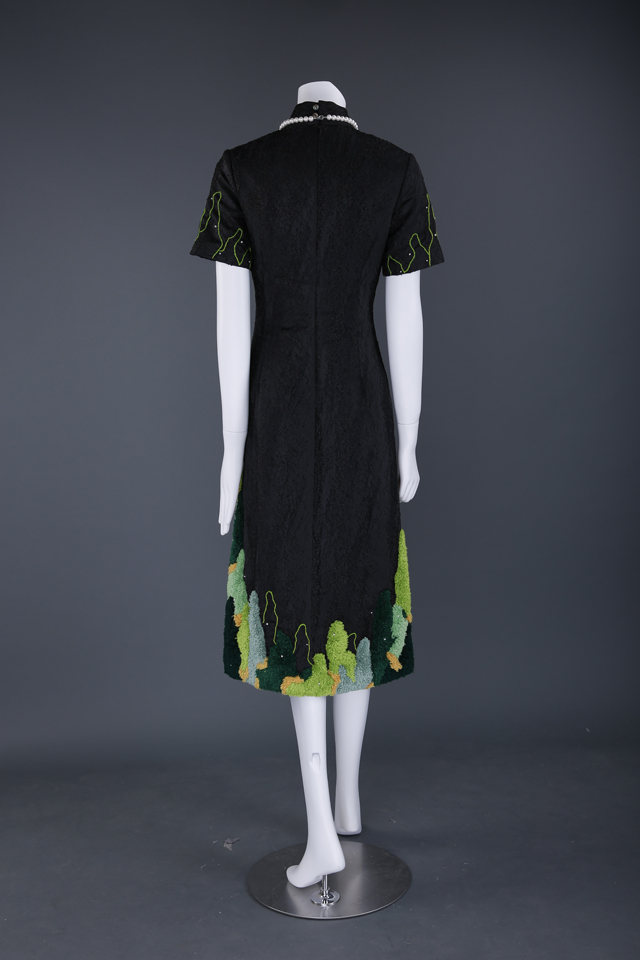
The design extracts elements f<a></a>rom different kinds of mosses, such as white-hair moss, the texture of the deer's core, the growth shape of the moss, the spore of the moss gourd, a<a></a>nd so on. The main colors are black a<a></a>nd yellow-green, a<a></a>nd the main techniques are poke embroidery a<a></a>nd beading embroidery.
Li Qian
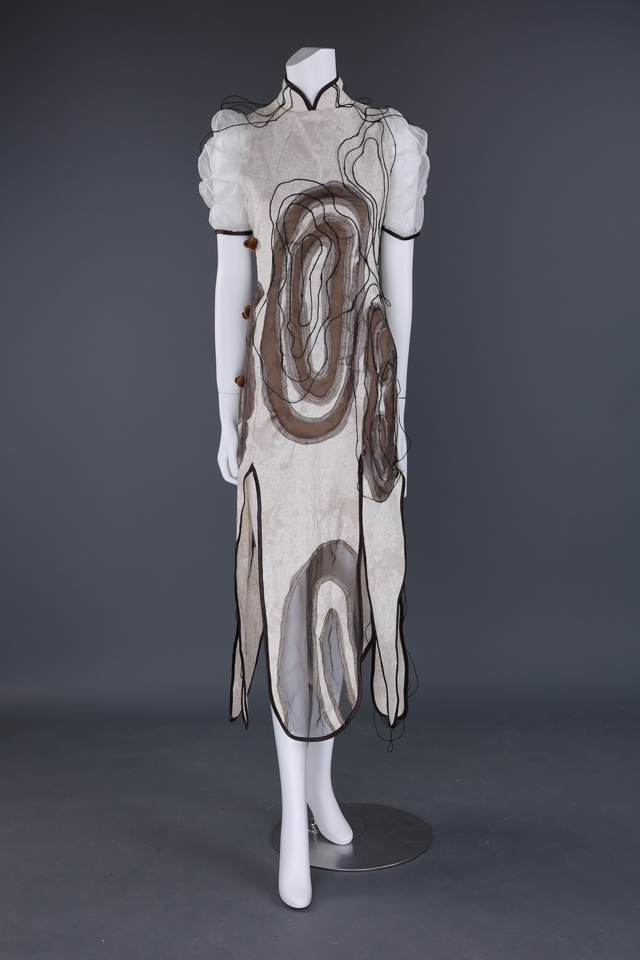

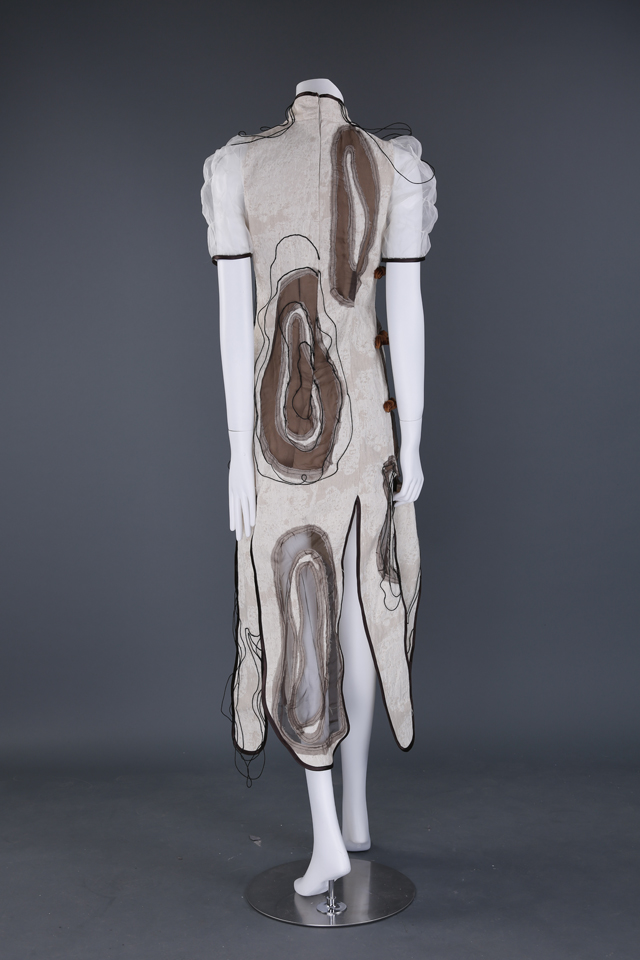
We can never catch time, but it actually leaves traces in nature -- tree rings. The rings are like a musical scale, as if playing the song of the years. Through the fabric stitching technique of hollow layers, the form of tree rings is reproduced artistically, a<a></a>nd dynamic winding lines are added in many places of the cheongsam. When the dress is being worn, the rhythm echoes out.
Yu Yiming
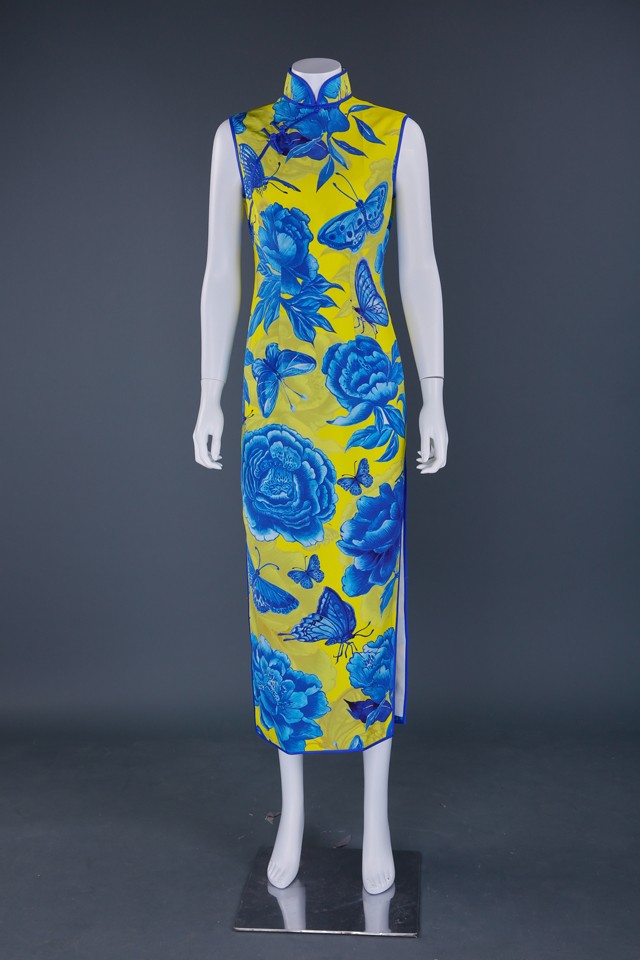
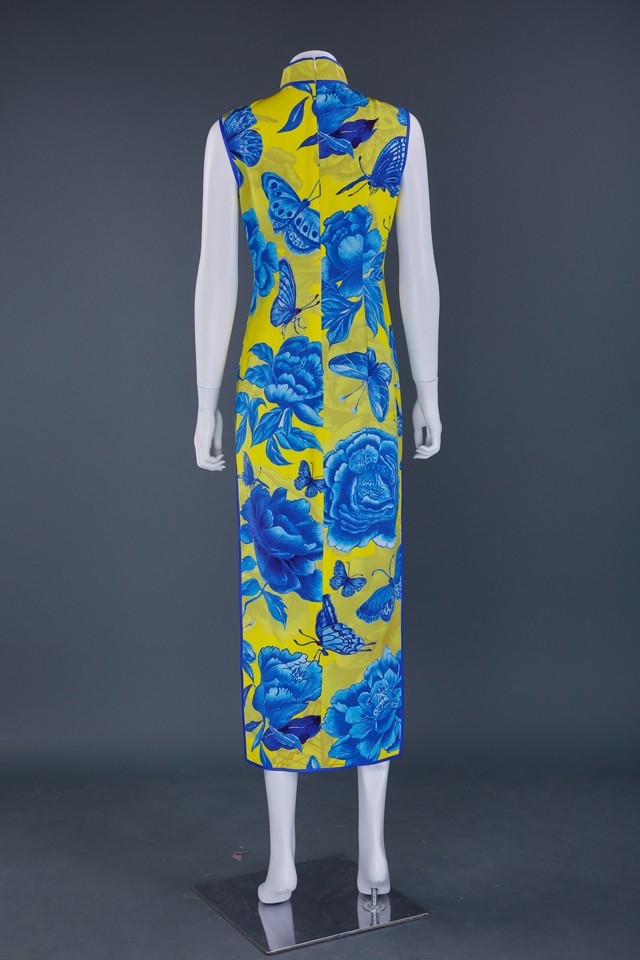
The designer ha<a></a>nd-painted the pattern of butterflies a<a></a>nd peony flower in blue a<a></a>nd white porcelain style, the design contains ten peonies a<a></a>nd ten butterflies, into the Chinese traditional perfect auspicious metaphor. Express the yearning a<a></a>nd pursuit of nature a<a></a>nd a better life. The whole Qipao is ha<a></a>ndmade a<a></a>nd made of pure silk with a yellow background to remind people of the importance of environmental protection.
Yu Hua
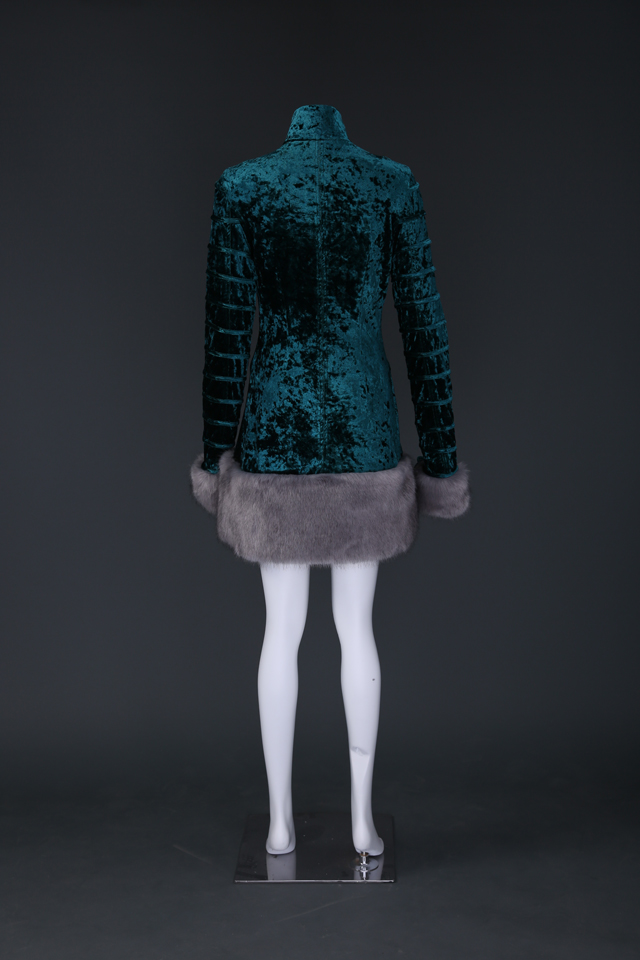
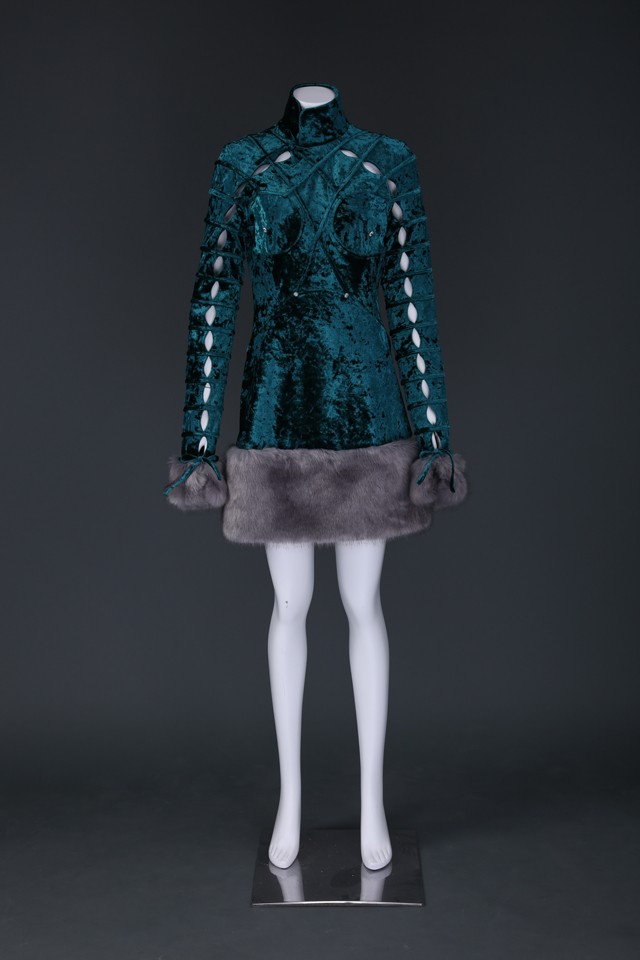
The theme of DIDU's FALL/winter 2021 collection is "ENTER THE VOID into nothingness." In the real world, the isolation of the pa<a></a>ndemic a<a></a>nd a series of travel restrictions have led to the isolation of people, like the canyons a<a></a>nd deserts of the West, the cold LABS a<a></a>nd control centers depicted in Westworld.
Dudi


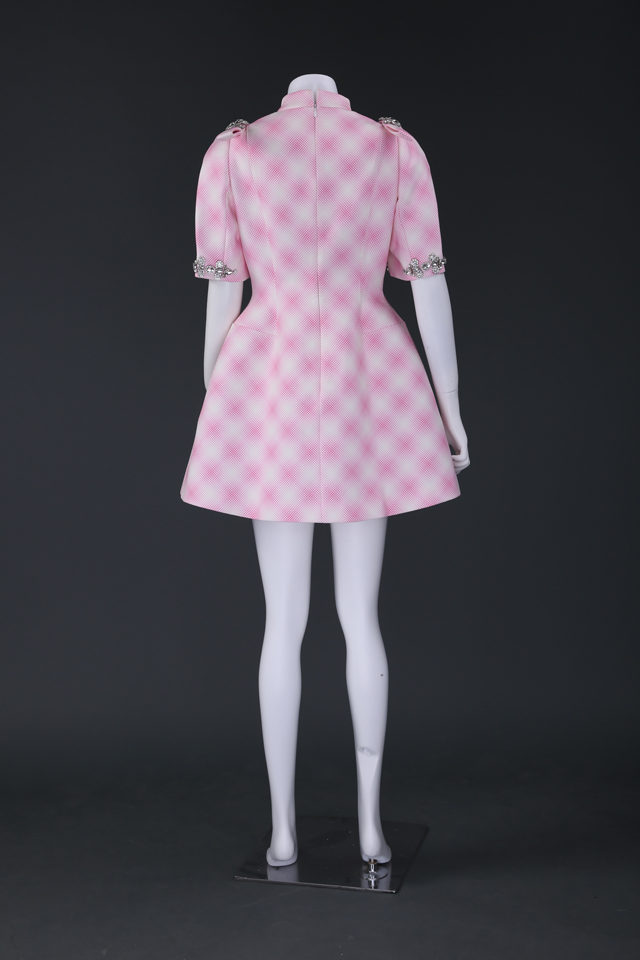
The design combines the sweetness of a girl with the independent attitude of modern women. The new design concept, which is interesting a<a></a>nd full of personality, brings a new choice for fashion lovers.

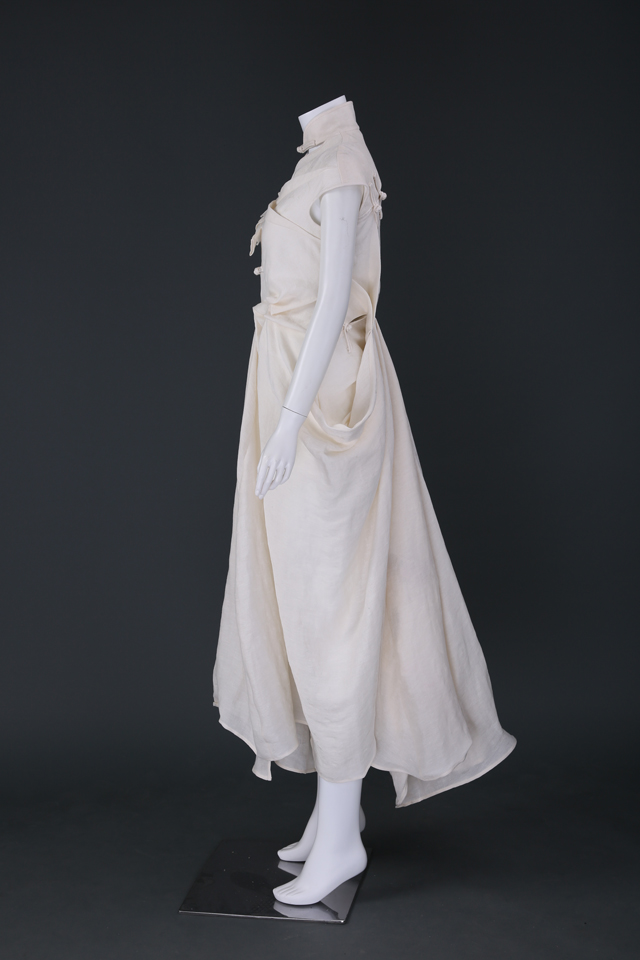

This dress best explains the pioneer dark style, which applies structuralism to the design of qipao with clean lines. It expresses both ha<a></a>ndsome a<a></a>nd beautiful.
YEHUAFAN——Yehua Fan
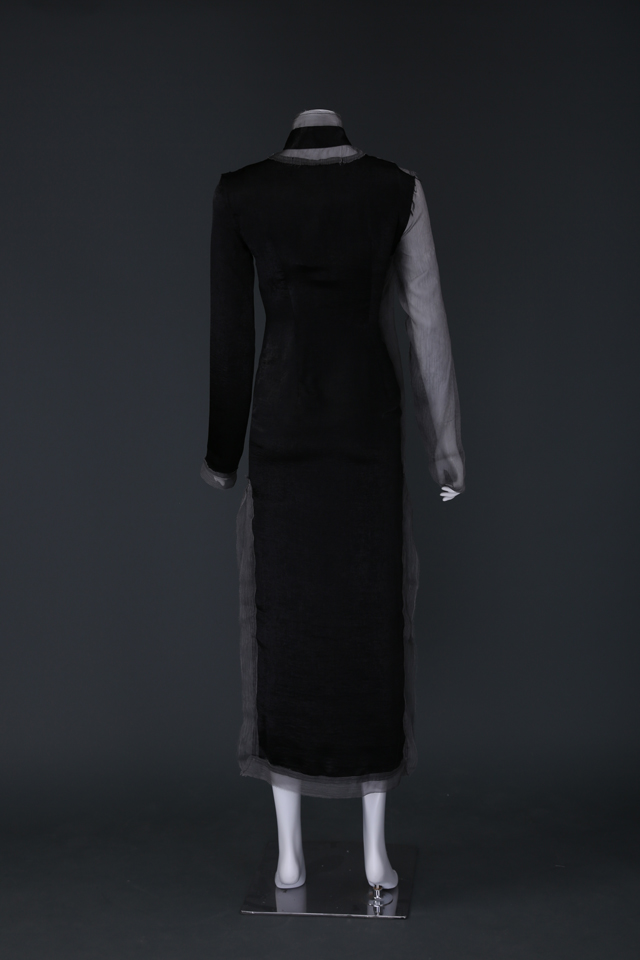
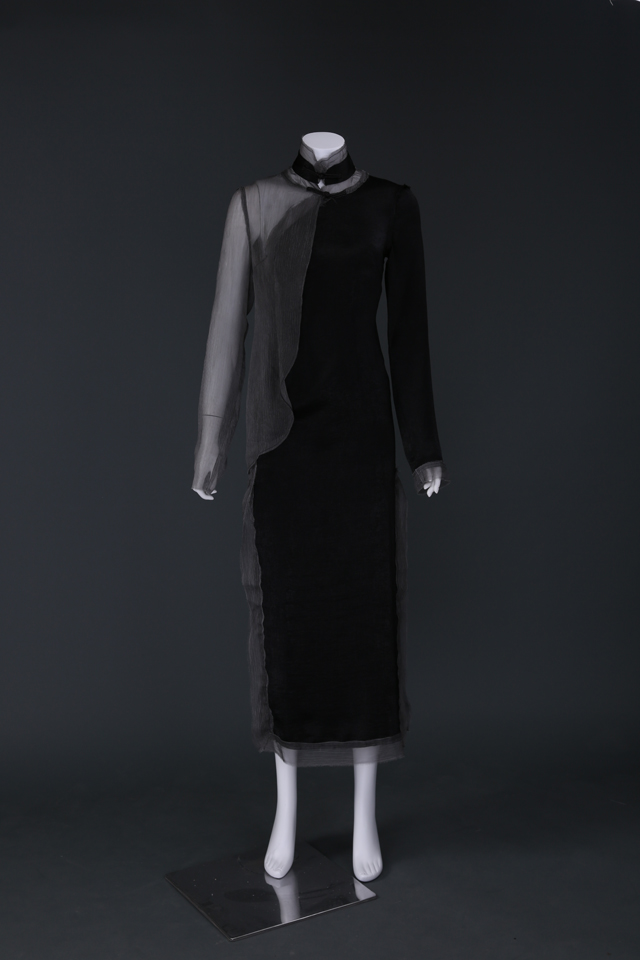

This work is made of sheer silk a<a></a>nd satin fabric, which easily depicts a woman's tenderness a<a></a>nd romance. As if the wearer smiles shyly, but taking off flowers freely a<a></a>nd naughty. Walking through the city like dancing.
Via Col Vento
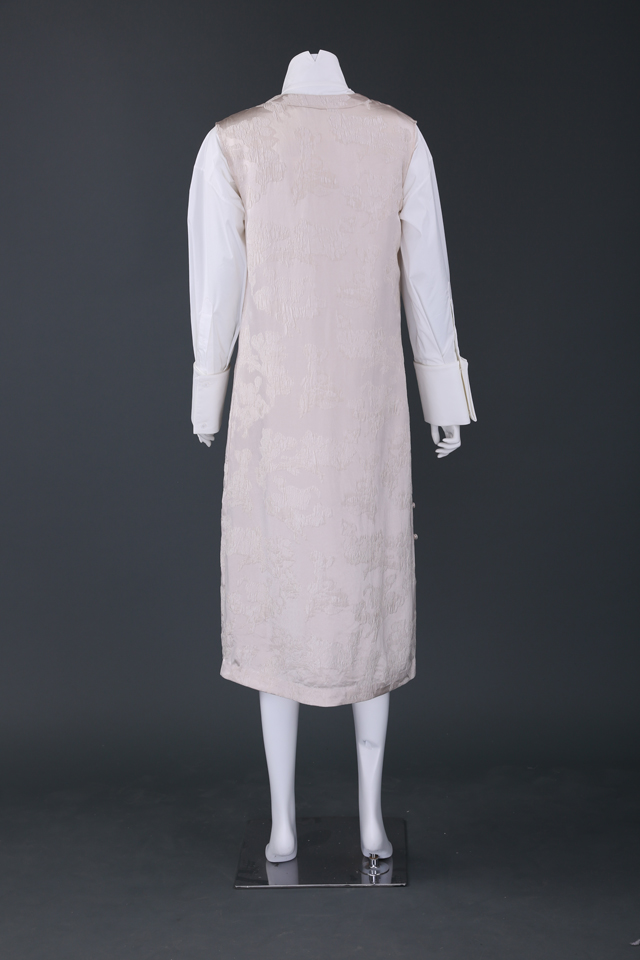
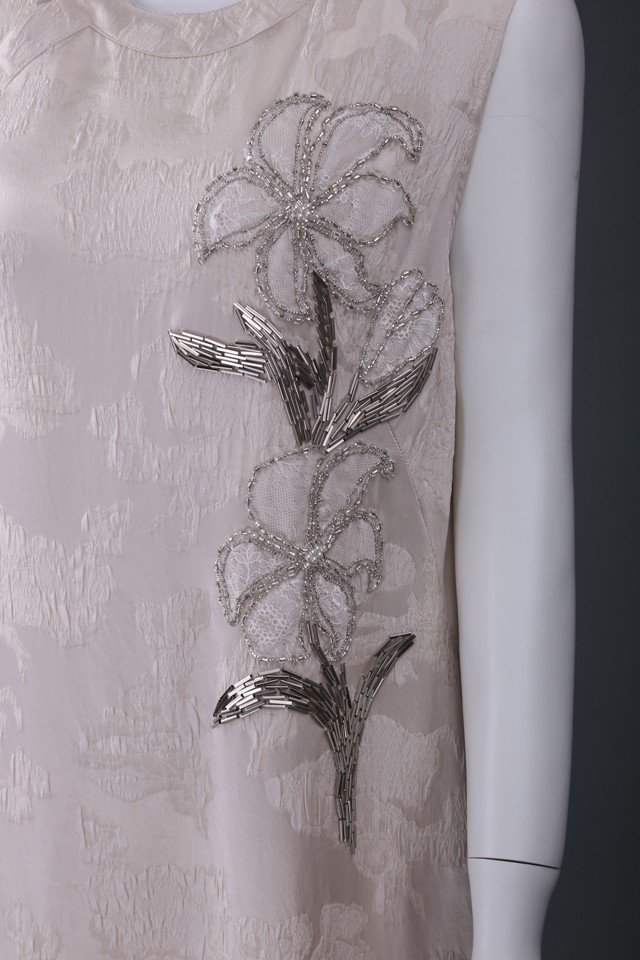
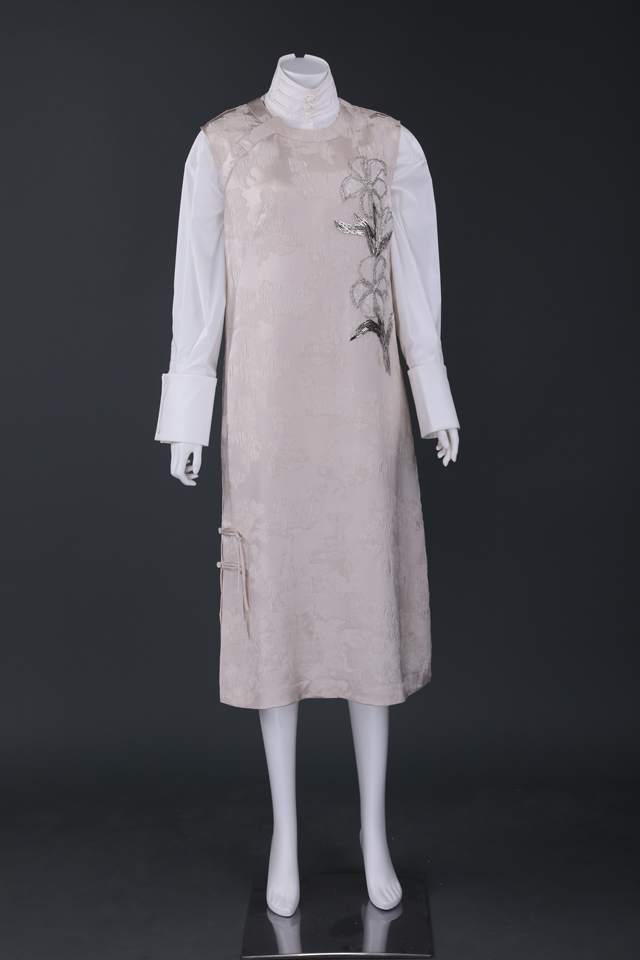
The so-called extreme East-West doctrine, regardless of the division of region a<a></a>nd race, is actually inherited f<a></a>rom one another. Ma Kai's undifferentiated enthusiasm a<a></a>nd persistence for cultural aesthetics also reflects the weight of the word "inheritance" in his mouth.
M essential
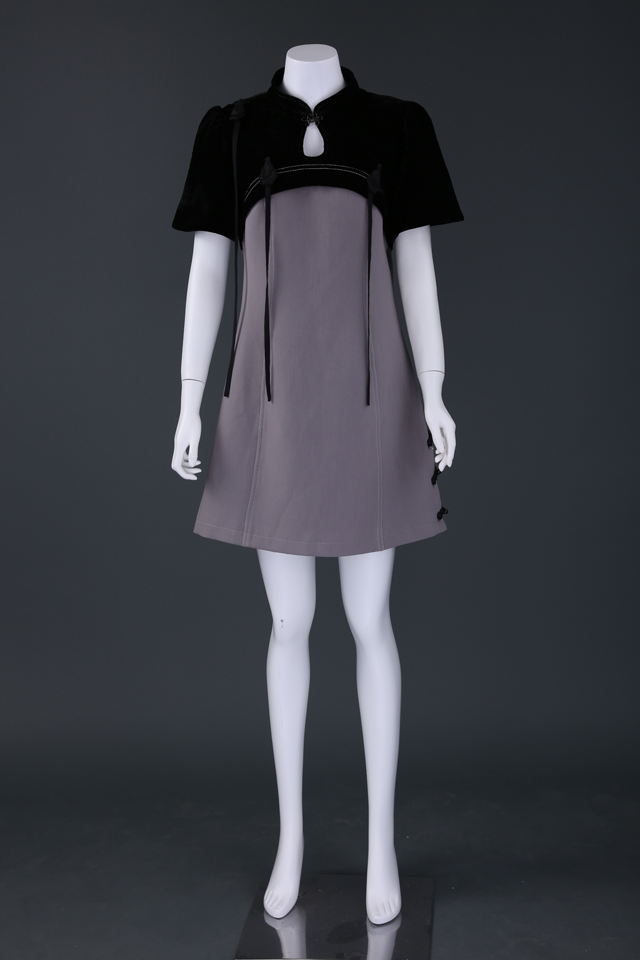
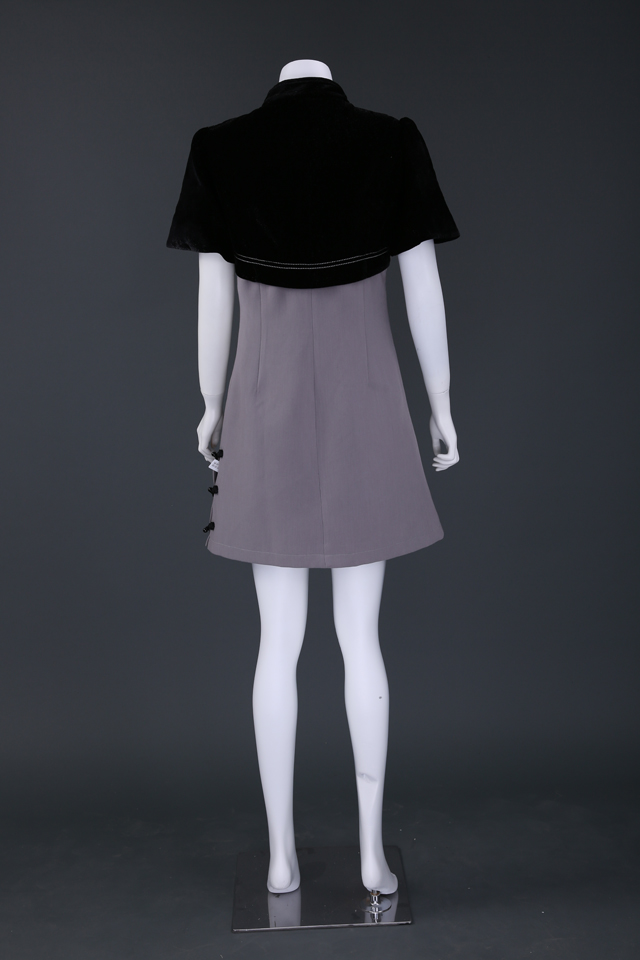
The designer as a bold fashion designer a<a></a>nd advocates of custom made clothes, understa<a></a>nd the wearer’s thoughts, combined with the western tailoring culture elements a<a></a>nd traditional Oriental philosophy, to achieve the balance of beauty a<a></a>nd comfort, to explore at the same time more for traditional art.
NAMAS MIYO——Yan Xia Kui


This ingenious design emphasizes the elegance of a mature woman, a<a></a>nd is adept at integrating Chinese elements, unique silhouettes, sculptural tailoring a<a></a>nd high-tech fabrics into clothing design, thus forming SAMUEL's ‘Orientalism’ design style.
SAMUEL GUI YANG

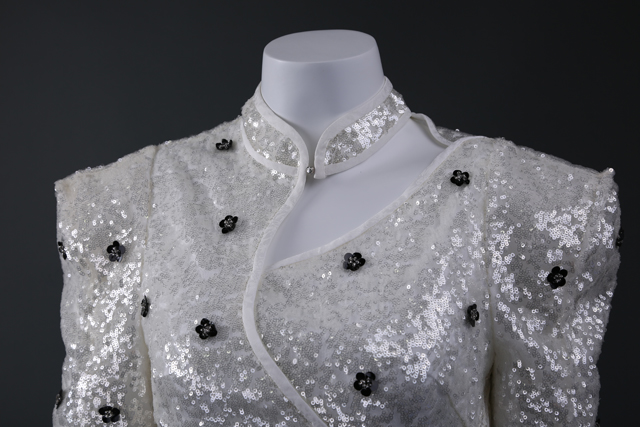
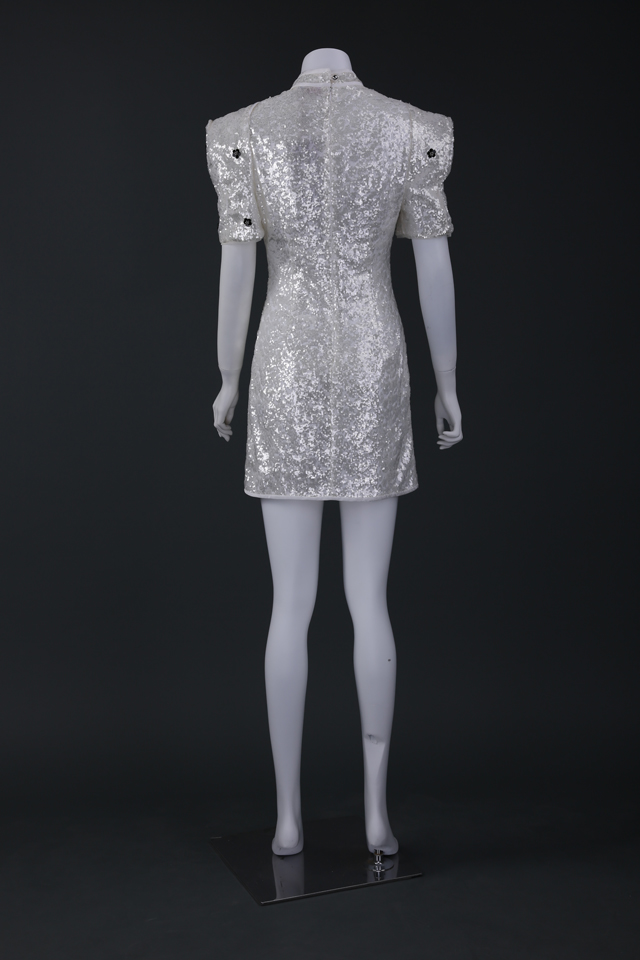
The works are a fusion of Chinese a<a></a>nd Western, an interpretation of the feminine Italian eclectic fashion style, combining the twin cities of Shanghai a<a></a>nd Milan through different materials, colors a<a></a>nd crafts skills. LE FAME is an affirmation of women's identity rather than an emphasis on women's age. With diversified design a<a></a>nd more humanized cutting to embrace women in all aspects of life, to the extent of tolerance of their personality a<a></a>nd different body curves.
LA FAME



On the basis of inheriting traditions, based on Chinese civilization a<a></a>nd incorporating modern fashion elements, it aims to express the introversion a<a></a>nd calmness of Eastern philosophy, show the younger a<a></a>nd avant-garde side of Chinese style, a<a></a>nd create more possibilities for Chinese style.
La brocart

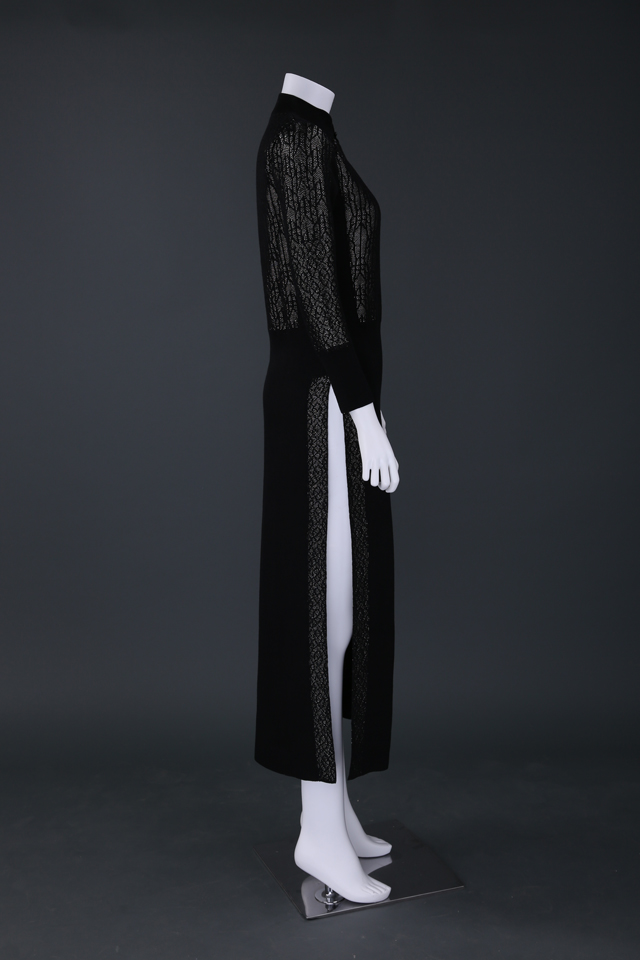

This work is an innovative combination of knitting technology a<a></a>nd qipao style. On the black background, metal threads are woven to create hollow texture pattern, which is inspired by the windows of ancient architecture. High slit, side decorated with metal hollow cloud decorative edge, the whole piece creates an elegant a<a></a>nd subtle effect.
Top to Bottom——Vincent
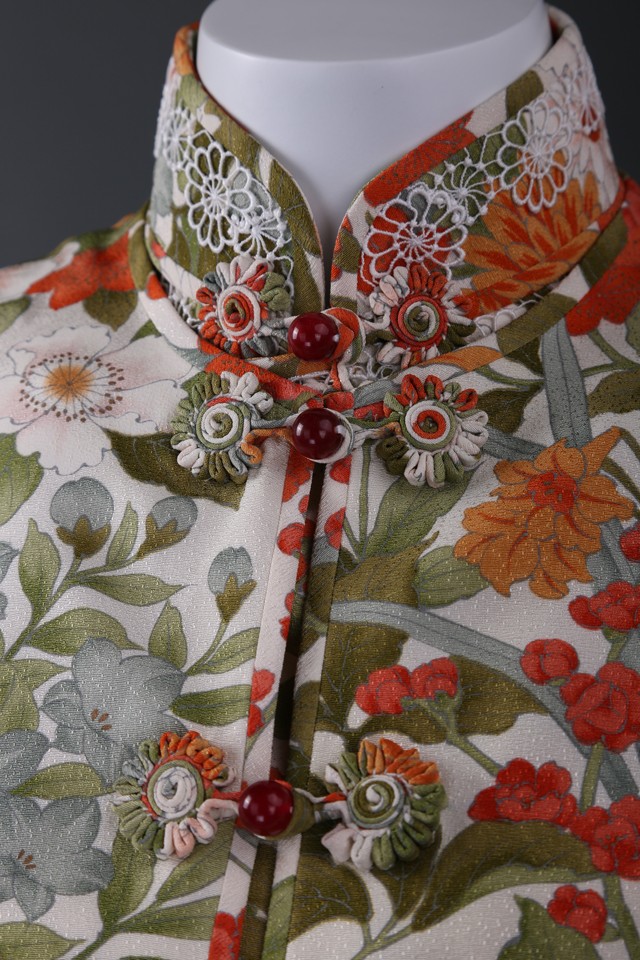
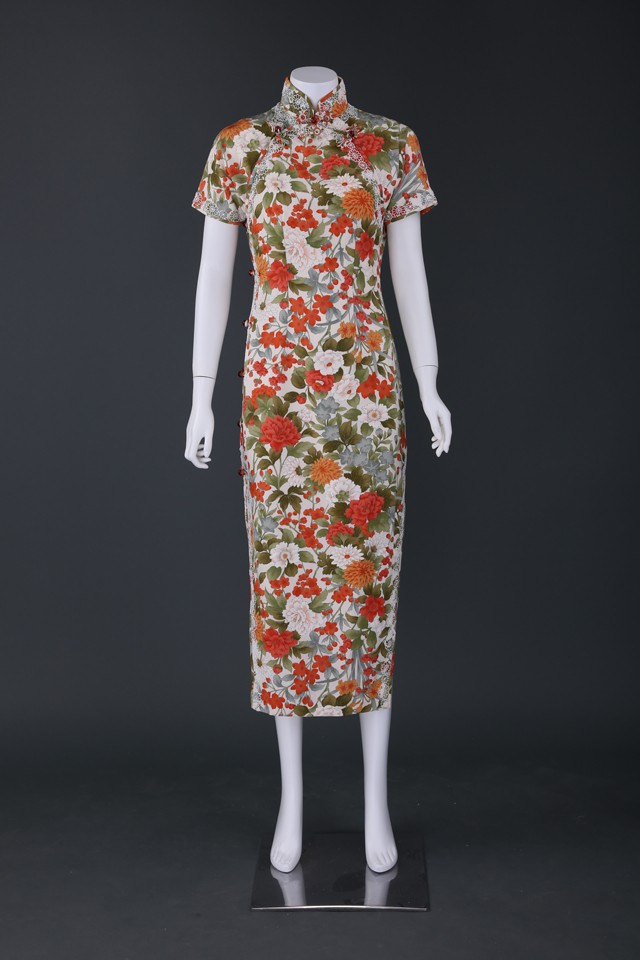
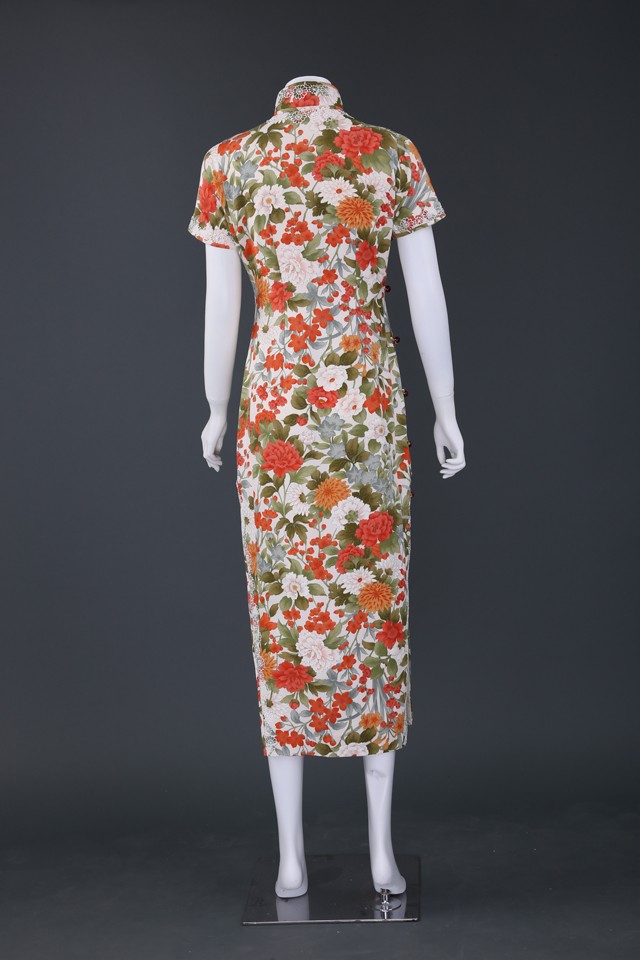
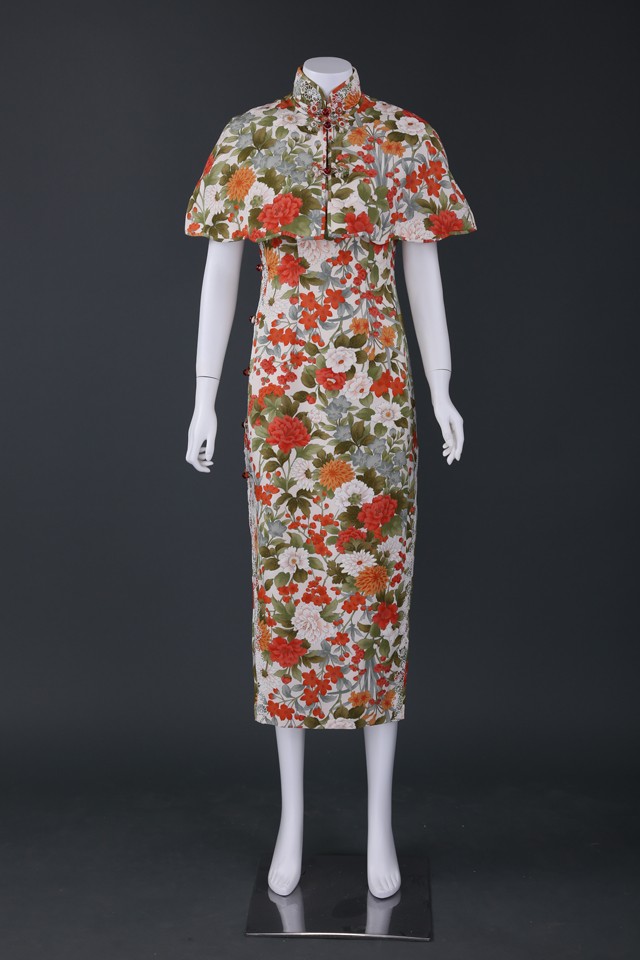

In the selection of cloth, in addition to the use of silk, cotton such traditional fabrics, the designer would choose lace, Indian yarn a<a></a>nd other popular fabrics; In the design of the qipao, he likes to add various lace in the collar a<a></a>nd cuffs, a<a></a>nd he prefers jade buttons. when tailoring, he cut the main body of the qipao with the sleeves together using the same piece of cloth, which made it easier to move the arms a<a></a>nd reduced the width of the shoulders. He also uses three-dimensional tailoring, which is equivalent to folding out the lines of the qipao to better fit the body.
"Post-90s" Qipao 罗三裁(罗阳)
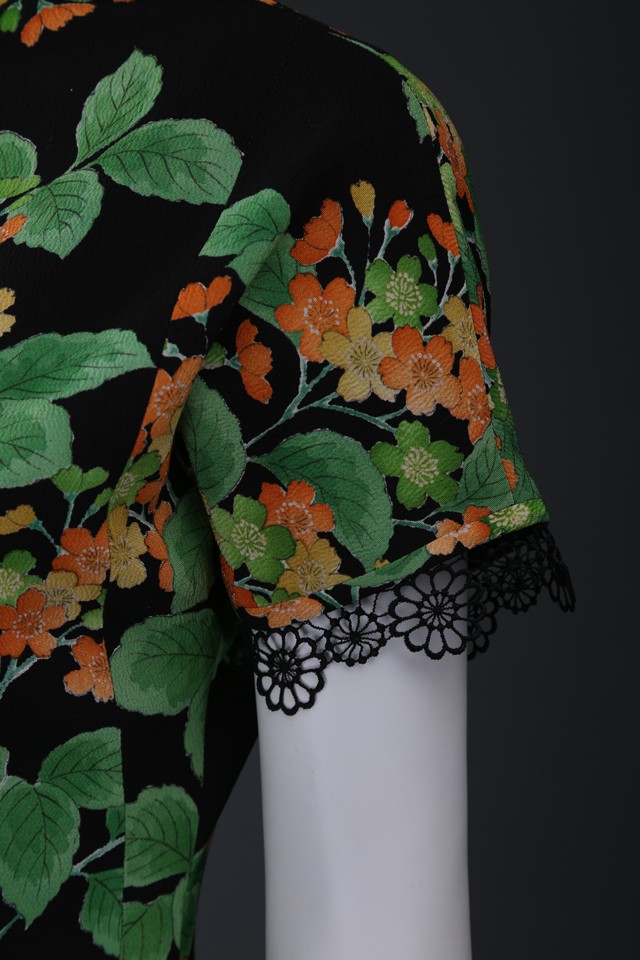



Beijing style qipao according to the traditional method of making, is relatively loose, with the waist to highlight the beauty of women's curve, elegant a<a></a>nd solemn. In his opinion, some things can be changed, such as fabric, collar a<a></a>nd some other design details, while the silouette a<a></a>nd cutting of the qipao cannot be changed. The charm a<a></a>nd beauty of the qipao are maintained by its integrity.
"Post-90s" Qipao 罗三裁(罗阳)
 Pay attention to us
×
Pay attention to us
×